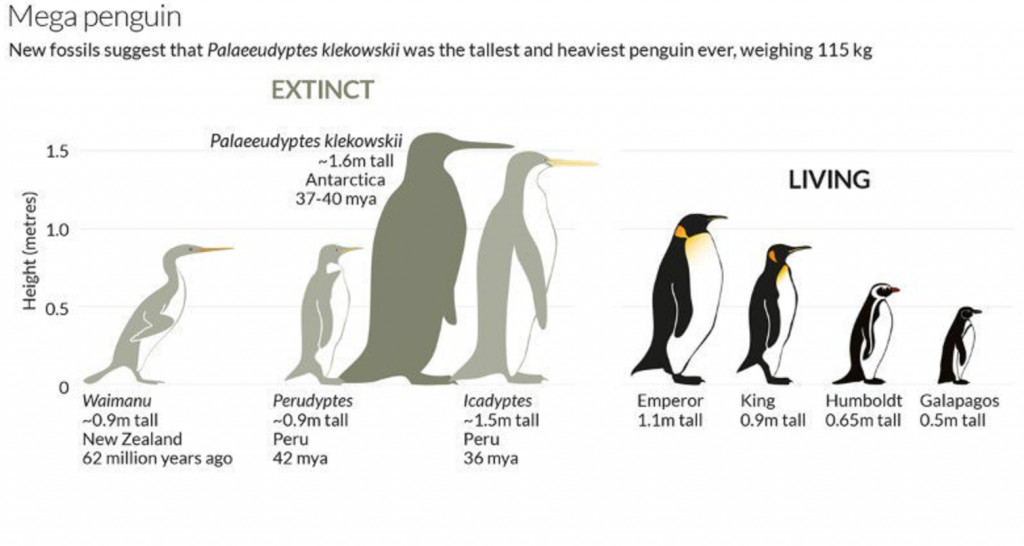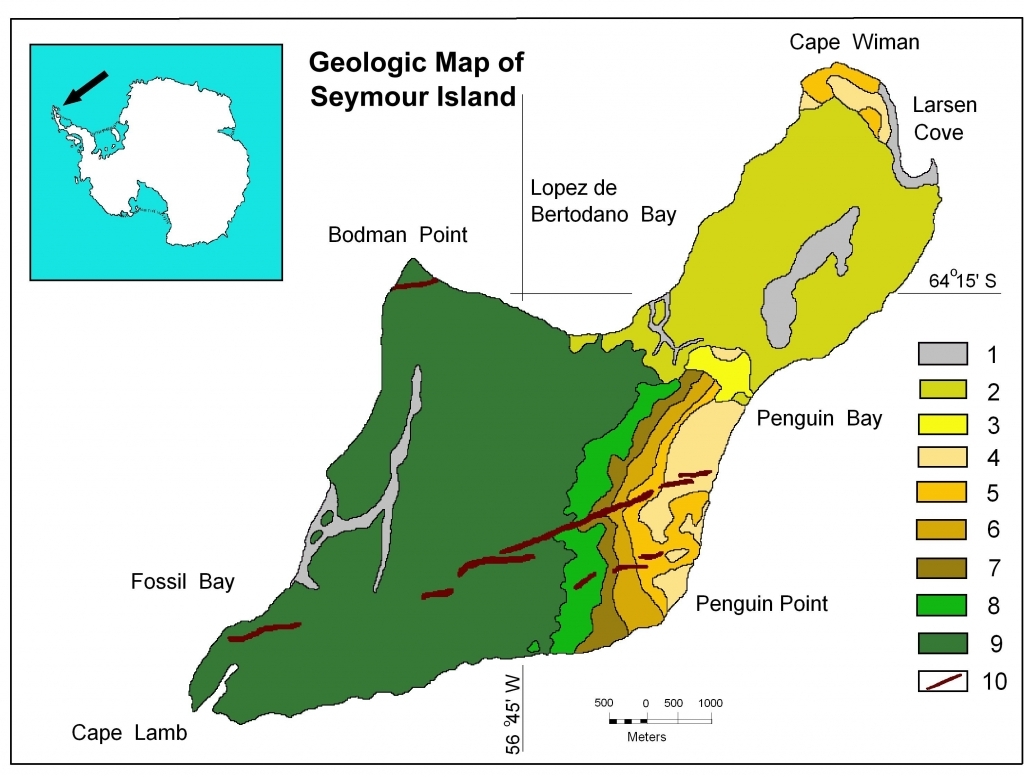
The fossil remains of the largest penguin species on the planet were unearthed in Antarctica.
The fossils belonged to a colossal 6-foot, 8-inch penguin that weighed 250 pounds and lived approximately 37 million years ago.
Because of its size, this species has been dubbed the “Colossus penguin.”

Scientists were able to estimate the size of this giant bird by comparing and scaling sizes of bones to modern-day penguins. (The largest penguin species alive today is the emperor penguin, measuring about 4 feet tall and weighing around 100 pounds.)
Given the scientific name Palaeeudyptes klekowskii, this penguin thrived in the warmer Late Eocene epoch. The climate was likely similar to that of the southern tip of South America.

According to Paleontologist Carolina Acosta Hospitaleche, this was “a wonderful time for penguins, when 10 to 14 species lived together along the Antarctic coast.”
The colossus penguin was probably a good hunter; Because larger penguins are known to be able to hold their breath longer, this particular penguin may have been able to stay underwater for upwards of 40 minutes.
The penguin’s remains were the most complete fossil record ever discovered in the Antarctic.
The fossils were found at La Meseta on Seymour Island, a chain of 16 islands on the Antarctic Peninsula. This area is well known in the scientific community as having an abundance of penguin bones.

Who knows what amazing fossils they’ll find next?




